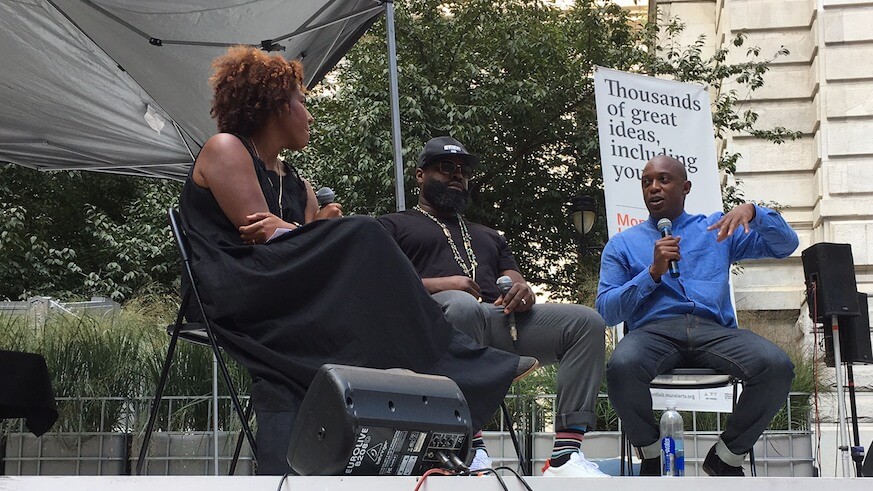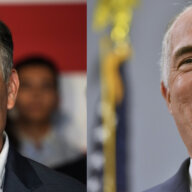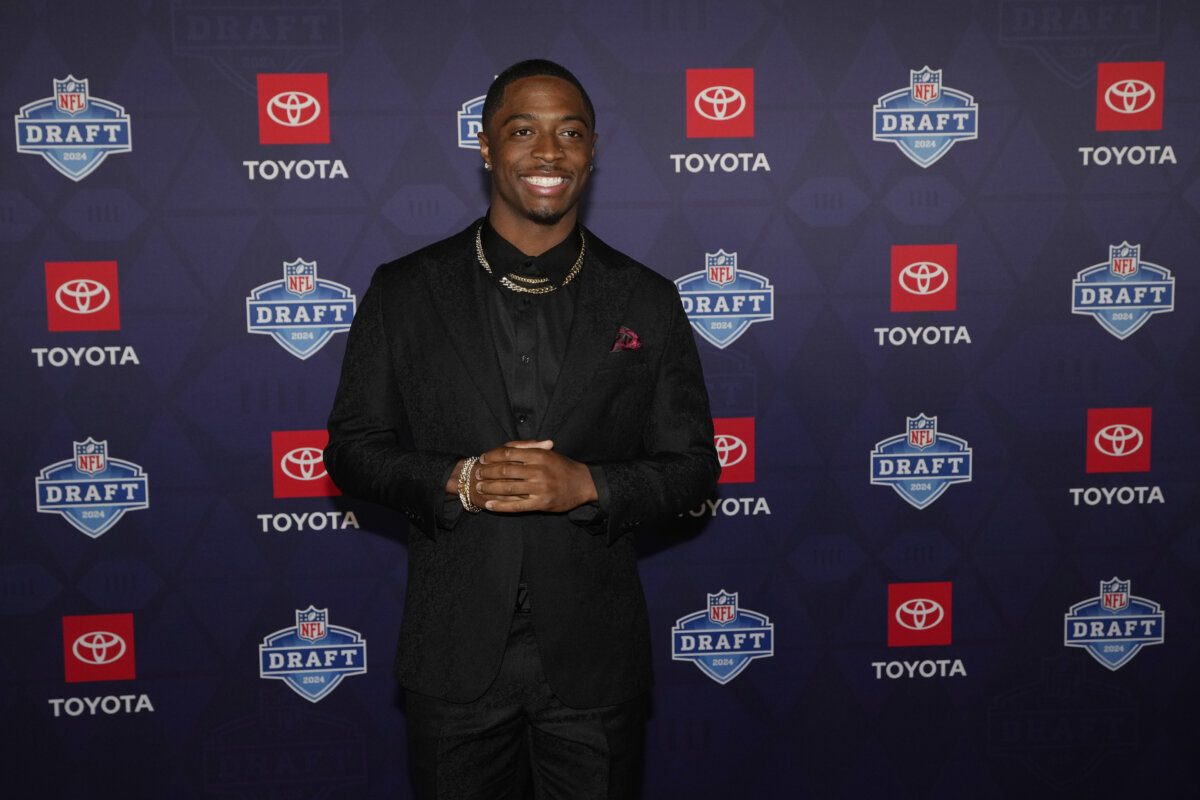The artist behind the Afro pick sculpture that attracted a flurry of attention for its provocative placement near former Mayor Frank Rizzo’s statue opened up about some of his thoughts on the piece in a recent panel discussion.
While Hank Willis Thomas credited his grandmother and artist Claes Oldenburg’s “Clothespin” with inspiring him, and his personal experience getting his hair combed with that exact same type of Afro pick in his youth led to choosing this subject, he said.
“Back in those days, I was getting used to getting my hair combed with an Afro pick. … I always wondered why it had a fist on top of the handle,” said Thomas, speaking at a panel discussion with Black Thought of the Roots and moderator Salamishah Tilleton on Saturday in the courtyard of City Hall. “It was one of those questions you have as a child: ‘But why?’ … I wanted to make this memorial to an element of American history and African-American history, Philadelphia history, that I think isn’t often talked about or celebrated.”
The appearance of the 12-foot-tall Afro pick near the statue immediately attracted acclaim from those who saw it as an act of defiance toward the Rizzo statue, which stands some 100 feet from the Afro pick.
Calls have been mounting to remove the Rizzo statue in recent months, which many say represents an era when racism was accepted and actually propagated from City Hall. His defenders say Rizzo (police commissioner from 1967 to 1971, mayor from 1972 to 1980) was not a bigot and worked to integrate the police department. The statue’s fate will be determined by the city after a series of hearings.
Thomas’ father was a Black Panther. His grandfather and grandfather’s brothers were all police officers, and Thomas said he grew up hearing stories about that time, he said.
The Afro pick sculpture’s title, “All Power to All People,” is drawn from a speech by Fred Hampton, the famed Black Panther who was killed inside his home by Chicago police in 1967. Hampton said the phrase, a modification of the Black Panther slogan “power to the people,” and the following words during a speech: “White power to white people, brown power to brown people, yellow power to yellow people, black power to black people, X power to those we left out, and Panther power to the vanguard party.”
As Thomas put it, “This idea sometimes that black power is supposed to be a negation of other people’s power, rather an elevation of all of us to an equal level – [that] is forgotten about the Black Panther movement.”
Thomas said he supports rethinking public monuments, like the Civil War statues that have attracted recent controversy, but said in his practice he focuses on being “visionary” rather than “reactionary.”
“Monuments like the one to Frank Rizzo suggests this larger-than-life figure who was welcoming people. … Obviously, there are many other sides to that story,” Thomas said. “I really thought of it more as a question than an answer. … Afro picks are in stores pretty much everywhere in the country, and it has a 6,000-year-old history. So I really don’t quite understand how that can be seen as offensive to some people, but I also have to recognize that’s an interpretation of the work.”
Watch the whole talk below.




























